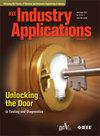数据驱动和交互增强弹性方法的技术经济分析
IF 4.2
2区 工程技术
Q2 ENGINEERING, ELECTRICAL & ELECTRONIC
引用次数: 0
摘要
随着极端天气事件导致更频繁的停电,了解和增强电网弹性对于减轻服务中断带来的经济损失和非能源影响至关重要。本研究引入了一种新的技术经济分析框架来评价弹性增强机制。该框架将电网响应建模与联合模拟方法和评估方法相结合,以提供全面的评估。我们将此框架应用于2021年2月冬季风暴Uri期间德克萨斯州电网的现实案例研究。分析了两种先进的弹性策略:数据驱动的滚动中断机制和基于交互能量(TE)的分配方案。滚动停电方案根据实时缩减需求有选择地为客户提供服务,而TE方案允许客户根据自己的喜好交易能源分配。我们的研究结果表明,滚动停电和TE方案都明显优于传统方法(即控制停电),分别减少了41%和64%的不向客户供应的能源量。这些方法还增强了灵活性和客户满意度,同时提高了能源利用率以获得更大的弹性。此外,它们的热舒适性提高了3.5倍,大大降低了客户的风险暴露。本研究的一个关键贡献是在考虑能源和非能源影响的同时,解决了公用事业和客户的观点。技术经济分析表明,与现有解决方案相比,实施这些弹性增强策略将导致额外的11亿至16亿美元的公用事业成本,但有可能避免173亿至180亿美元的客户损失,从而强调投资先进弹性的价值,因为它为客户提供了显着的社会效益。本文章由计算机程序翻译,如有差异,请以英文原文为准。
Techno-Economic Analysis of Data-Driven and Transactive Approaches for Resilience Enhancement
As extreme weather events lead to more frequent power outages, understanding and enhancing grid resilience is critical to mitigating economic losses and non-energy impacts from service disruptions. This study introduces a novel techno-economic analysis framework for evaluating resilience enhancement mechanisms. The framework combines grid response modeling with a co-simulation approach and valuation methodology to provide a comprehensive assessment. We apply this framework to a realistic case study of the Texas grid during Winter Storm Uri in February 2021. Two advanced resilience strategies are analyzed: a data-driven rolling outage mechanism and a transactive energy (TE) based allocation scheme. The rolling outage scheme selectively serves customers based on real-time curtailment needs, while the TE scheme allows customers to trade energy allocations according to their preferences. Our findings show that both the rolling outage and TE schemes significantly outperform conventional methods (i.e. controlled outages) by reducing the amount of energy not supplied to customers by 41% and 64%, respectively. These approaches also enhance flexibility and customer satisfaction, while improving energy utilization for greater resilience. Additionally, they maintain thermal comfort about 3.5 times better and substantially lower customer risk exposure. A key contribution of this study is addressing both utility and customer perspectives while considering both energy and non-energy impacts. The techno-economic analysis indicates that implementing these resilience enhancement strategies would incur an additional $1.1B to $1.6B in utility costs but has the potential to avoid $17.3B to $18B of customer losses as compared to existing solutions, thereby underscoring the value of investing in advanced resilience, as it provides significant societal benefits to customers.
求助全文
通过发布文献求助,成功后即可免费获取论文全文。
去求助
来源期刊

IEEE Transactions on Industry Applications
工程技术-工程:电子与电气
CiteScore
9.90
自引率
9.10%
发文量
747
审稿时长
3.3 months
期刊介绍:
The scope of the IEEE Transactions on Industry Applications includes all scope items of the IEEE Industry Applications Society, that is, the advancement of the theory and practice of electrical and electronic engineering in the development, design, manufacture, and application of electrical systems, apparatus, devices, and controls to the processes and equipment of industry and commerce; the promotion of safe, reliable, and economic installations; industry leadership in energy conservation and environmental, health, and safety issues; the creation of voluntary engineering standards and recommended practices; and the professional development of its membership.
 求助内容:
求助内容: 应助结果提醒方式:
应助结果提醒方式:


